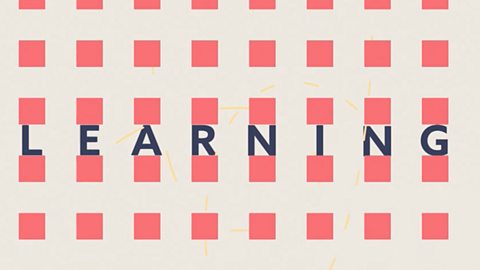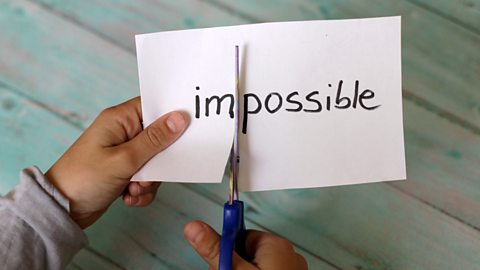This article was first published on 29 September 2020.
Throughout humanity we have assumed many things to be true, which have in fact turned out to be false.
Take learning, for example. Most of us have a good idea how learning happens, right? We have a decent understanding of what learning involves and what works best for us. But what if many of the facts we know about learning are, in fact, wrong? And what if, by understanding better how learning works, we can become better learners?
Here, education writer and speaker David Didau debunks some common myths and misconceptions about learning… and you might be surprised by what you learn.
David Didau: Over the course of history, many things people assumed to be true have turned out to be… a bit iffy. The earth is not flat, whales are not big fish and burying a cat at midnight is in fact not the best way of tackling toothache.
But of course, in the modern world, our understandings are more dependable and based on evidence. Especially when it comes to education and the development of learning experiences. Right?
Well, let’s have a look at a few commonly-understood “facts”…
Number One – We learn more effectively if we receive information in our preferred learning style.
In other words, we all have a certain type of input that works best for us. For some people it’s visual, for some it’s auditory, and for others it’s kinaesthetic. In a recent survey, a rather whopping 93% of teachers said that they believe this. The only problem is that it’s…WRONG.
Study after study has shown that there’s no benefit at all in presenting information to people in their ‘preferred’ format.
What does work, is presenting information that’s appropriate to the context of what’s being taught. If you’re learning about maps and borders for example, visual information will be far more effective than a verbal description. And if you want to figure out chord structures, theories probably won’t sink in unless you thump away at a piano.
Number Two – Environments that are rich in stimuli improve younger children’s brains.
The more stuff young kids have to interact with, the more they’re going to learn. This is pretty obvious, but also… WRONG.Of course, we need stimuli to learn. But, the more cluttered an environment is, the less likely a child is to be able to concentrate on any one thing.
An overload of stimuli – lots of different things competing for attention - actually diminishes learning ability.
Number Three – People learn differently, depending on whether they’re left-brain dominant or right-brain dominant.This is pretty much indisputable. It’s a well-known fact that left-brainers are logical and objective, whereas right-brainers are intuitive and subjective. Which would have a huge impact on learning… if it wasn’t completely WRONG.
There’s actually no such thing as left-brained people and right-brained people. There are, of course, people who are more intuitive, and people who are more logical, but that’s not down to any differences in brain hemispheres. It’s just that everyone’s different.The left brain and right brain do perform slightly different processes, but we’re all using both sides, all the time.
Number Four – We only use 10% (or 20%) of our brains.
It’s not difficult to understand why this would be a popular idea. All those brain cells lying dormant… imagine what a genius you’d be if one day you could get them all fired up…But sadly there is no evidence for this idea … and it can be added to the pile of things that are entirely WRONG.
It’s true that we don’t use all the regions of the brain at the same time – but the whole thing does get used. Regularly, in fact.
Number Five – The more we practice multitasking, the better the brain gets at it.
This is something we all know. Nobody can succeed in today’s society without being able to juggle a host of simultaneous demands and tasks.
One small problem… it’s completely WRONG.
Why? Because the human brain cannot multitask. If we define multitasking as “carrying out two or more conscious thought processes at the same time, with no loss of speed or accuracy”, then no-one has ever been able to multitask.
When there are two tasks that have to be carried out at the same time, what we can do is task-switch – that means diverting attention from one to the other. But it’s not possible to focus on both at the same time.
Some people may be better than others at task switching, but nobody’s great at it. It always incurs what’s called a switching penalty – we get slower, less efficient, and make more mistakes, every time we switch.
Doing one thing, finishing it and moving on to the next is always more effective than trying to juggle.
Number Six – Learning can be observed.
Give someone some information. They repeat it back. Bingo! You’ve just observed them learning.
WRONG!
When someone repeats something, they’re simply mimicking. They’re only using their working, and that’s not the same thing as learning.
True learning is not about the here and now, but about elsewhere and later. Things have only really been learned if they can be remembered in the long term, and transferred to new contexts.
This misunderstanding of what actually constitutes learning is probably the biggest blind spot in modern education. Teachers often want to measure success by seeing if pupils are able to repeat important points there and then, in the lesson. But ascertaining if learning has actually taken place is not easy. The real question should be, will this knowledge make it through to the student’s long term memory?
So… a few more facts to fill history’s bin, and perhaps some ways to create more effective learning experiences.
For more information on the sources used for this film check out this document.

How to keep motivated and believe in yourself
Lacking that spring in your step? We've got great advice to get you leaping with purpose again.

The key to learning more effectively
David Didau talks about how learning works.

How to stay motivated
Top tips for staying focused and driven, from children's mental health charity, Place2Be.
